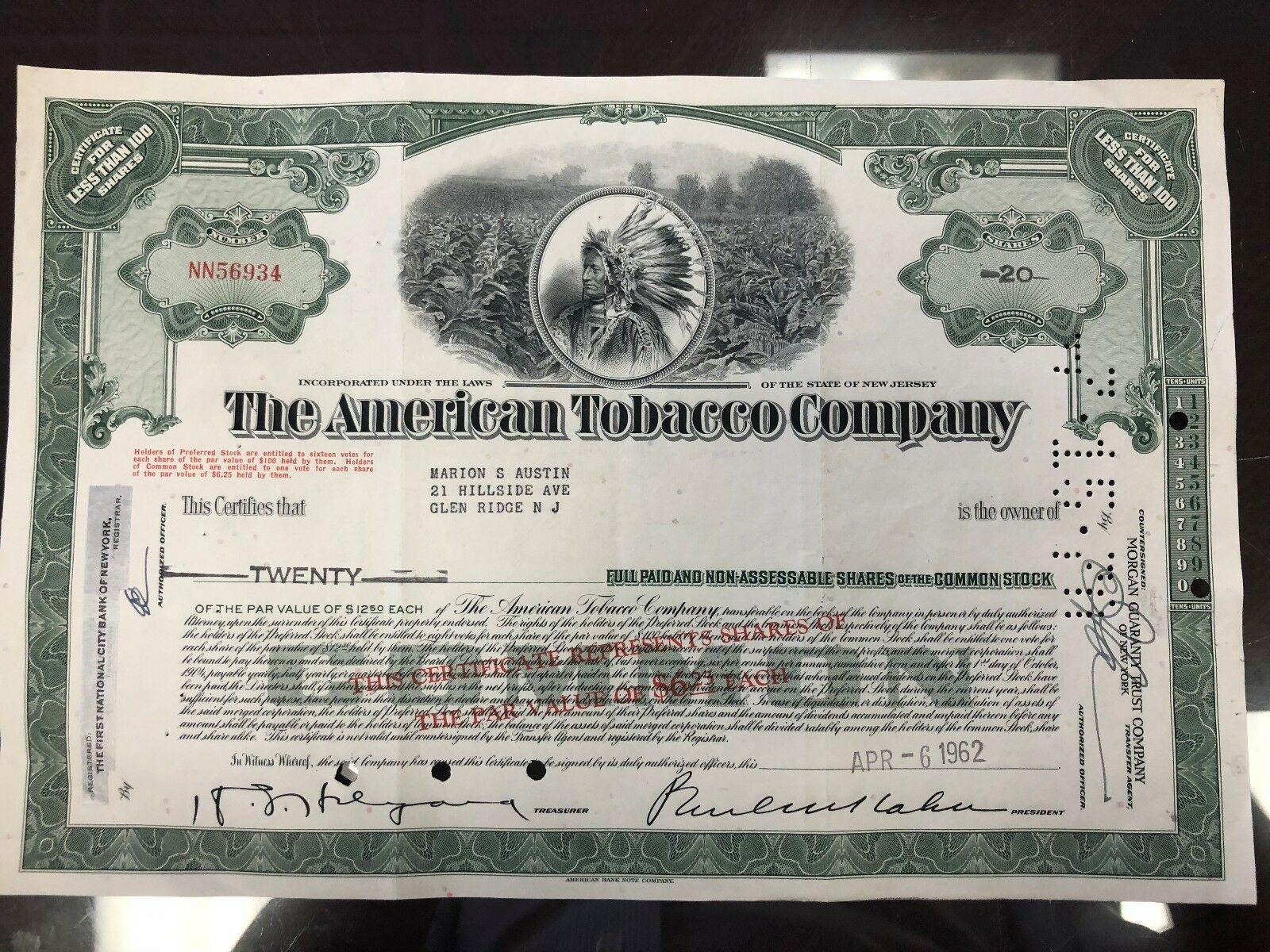-40%
Owens-Corning Fiberglas Corporation Bond Certificate
$ 1.58
- Description
- Size Guide
Description
Product DetailsBeautifully engraved antique bond certificate from the Owens-Corning Fiberglas Corporation dating back to the 1970's and 1980's. This document, which features the printed signatures of the company President and Secretary, was printed by the American Bank Note Company and measures approximately 12" (w) by 8" (h).
The vignette features a pair of male figures flanking the company logo.
Images
The images presented are representative of the piece(s) you will receive. When representative images are presented for one of our offerings, you will receive a certificate in similar condition as the one pictured; however dating, denomination, certificate number and issuance details may vary.
Historical Context
The industrial fury of the 19th and early 20th centuries gave birth to innumerable revolutionary ideas and inventions that changed the lives of tens of millions. One of the most forward-thinking visions involved creating fibers from glass - one of the world’s oldest and most abundant materials.
Both Owens Illinois Glass Company and Corning Glass Company had been experimenting with glass fiber technology. A researcher named Games Slayter, the driving force behind Owens Corning technology and innovation, envisioned a glass fiber material that was not as heavy as that produced by the then-current technology.
In 1932, a young researcher, Dale Kleist, who worked for Jack Thomas (Slayter’s research assistant), was attempting to weld together architectural glass blocks to form a vacuum-tight seal. A jet of compressed air accidentally struck a stream of molten glass, resulting in fine glass fibers. After achieving Slayter’s dream, Kleist further refined the process by using steam to attenuate the glass fiber, instead of compressed air. The result was a glass fiber material thin enough to be used as a commercial fiber insulation.
Since that time, Owens Corning has led every major technological advance in glass fiber technology. Nearly countless subsequent innovations have seen Owens Corning grow to a position of world leadership in glass fiberization and dramatically change the way people live, work and play.










